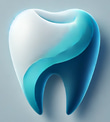Oral Health Myths
Debunking common misconceptions about dental care
5/13/20232 min read


Maintaining good oral health is crucial for overall well-being, but with so much information circulating about dental care, it can be challenging to separate fact from fiction. Many myths about oral health have persisted for years, leading people to adopt ineffective or even harmful habits. Let’s address and debunk some of the most common misconceptions about dental care.
Myth #1: Brushing Harder Cleans Better
Many people believe that brushing their teeth with force will remove plaque and stains more effectively. However, brushing too hard can actually harm your enamel and irritate your gums, leading to sensitivity and even gum recession. Instead, use a soft-bristled toothbrush and gentle, circular motions to clean your teeth effectively without causing damage.
Myth #2: If Your Gums Bleed, You Should Stop Brushing and Flossing
Bleeding gums are often a sign of gum inflammation, known as gingivitis, which is caused by plaque buildup. While it may seem logical to stop brushing or flossing in response to bleeding, doing so will only worsen the condition. Maintaining a consistent oral hygiene routine, including gentle brushing and flossing, can help improve gum health over time. If bleeding persists, consult a dentist.
Myth #3: Sugar Is the Only Cause of Cavities
While sugar does play a role in cavity formation, it is not the sole culprit. Cavities are caused by acid-producing bacteria that thrive on carbohydrates, including bread, pasta, and even fruit. Poor oral hygiene, frequent snacking, and lack of fluoride can also contribute to tooth decay. The best way to prevent cavities is by brushing twice a day, flossing, and visiting the dentist regularly.
Myth #4: You Don’t Need to See a Dentist Unless You Have a Problem
Many people avoid dental visits until they experience pain or noticeable issues. However, regular dental check-ups are essential for preventing problems before they become serious. Dentists can detect early signs of cavities, gum disease, and other oral health concerns, saving you from costly and painful treatments in the future.
Myth #5: Whitening Toothpaste Can Whiten Teeth Instantly
Whitening toothpaste can help remove surface stains, but it does not change the natural color of your teeth or provide instant results. Professional whitening treatments offered by dentists are more effective for noticeable and lasting whitening. If you’re looking to brighten your smile, consult your dentist for the best options.
Myth #6: Baby Teeth Don’t Matter Because They Fall Out Anyway
Some parents believe that since baby teeth are temporary, they don’t require much care. However, healthy baby teeth are essential for proper chewing, speech development, and guiding permanent teeth into place. Neglecting baby teeth can lead to decay, pain, and potential issues with adult teeth. Establishing good oral hygiene habits early is crucial for lifelong dental health.
Myth #7: Chewing Gum Can Replace Brushing
While sugar-free gum, especially those containing xylitol, can help reduce bacteria and increase saliva production, it does not replace brushing and flossing. Gum can be a helpful addition to oral hygiene but should never be considered a substitute for regular brushing and flossing.
Misinformation about dental care can lead to unhealthy habits and unnecessary fears. By understanding the truth behind these common oral health myths, you can take better care of your teeth and gums. Remember to brush and floss daily, maintain regular dental visits, and consult your dentist for any concerns. A well-informed approach to oral health will keep your smile bright and your teeth healthy for years to come!
